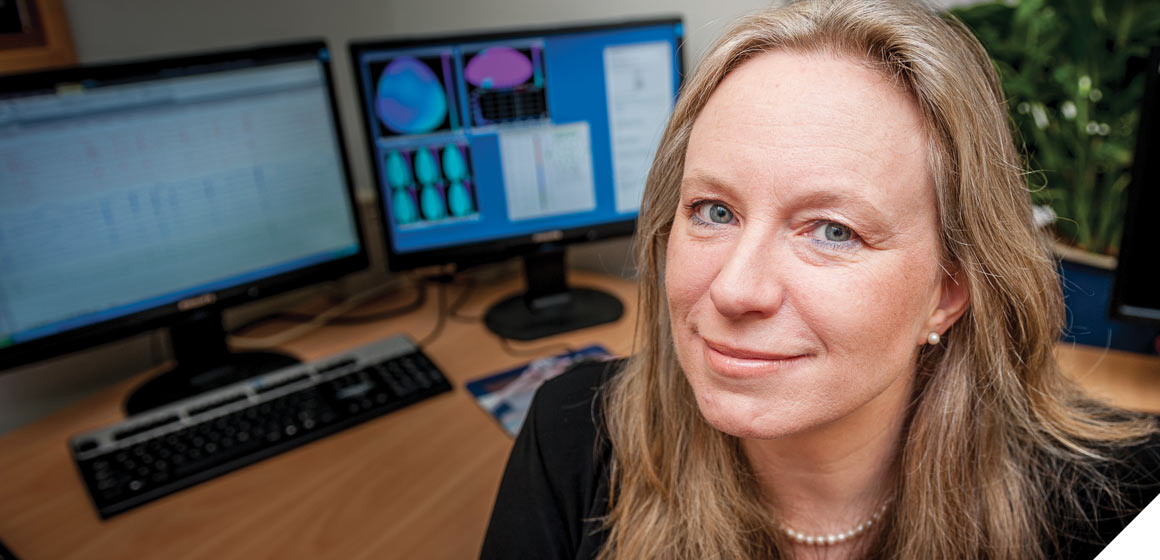 Monday 3 February 2014 10:10am
Monday 3 February 2014 10:10amSpectacular advances in molecular genetics hold great promise for the discovery of genetic mutations that cause diseases, such as epilepsy, and for consequent understanding of developmental biology.
For paediatric neurologist and epileptologist Dr Lynette Sadleir, that promise is inspiration for both her genetics research and her day-to-day dealings with families coping with the severe physical, cognitive, behavioural and social sequelae of intractable daily seizures on their child. Her hope is for a future where children presenting with suspected epileptic seizures can take a simple genetic test to find out the cause and prognosis, and help identify the best treatment.
The explosion in genetics research of recent years means there are already commercially available epilepsy "gene panels" in America and around the world that – while costly – provide some genetic answers.
Sadleir is in no doubt that the cost and availability of the panels will reduce drastically in the near future. But cost is only one problem – currently only a small portion of the genes that cause epilepsy is known and the spectrum of epilepsies these genes cause is still being elucidated.
To date only 29 epilepsy genes have been identified. Sadleir is part of an international team of researchers who have recently discovered three more.
"The more genes we find, the more people will know what the cause of their epilepsy is. At some point we'll easily be able to identify what we're dealing with and plan ahead a lot better."
They have, for the first time, found a gene (GRIN2A) that causes epilepsy-aphasia (progressive loss of speech and seizures in a previously healthy child) and two gene mutations (CHD2 and SYNGAP1) that cause epileptic encephalopathies – the type of epilepsies where the seizures and the anomalies that are going on in the brain between the seizures are negatively impacting on the brain's development above and beyond whatever the underlying cause of that is.
Critics are quick to point out that there are so many genes, the benefits of finding one more are negligible in that they affect such a small percentage of people. But Sadleir explains that genes work in networks and are often related to each other.
"The idea that there are lots of different genes involved so 'what does it matter?' is old fashioned. Research is discovering that individual rare mutations in different genes converge on specific biological pathways. Treatment for the epilepsies can therefore be developed to work on these biological pathways, making potential treatment and therapeutic intervention more generally relevant."
Epilepsy is a common group of disorders which affects an estimated 33,000 people in New Zealand, of whom 10,000 are complex drug-resistant cases. Over half of epilepsy is felt to be genetic in origin.
"Our long-term goal is to improve the outcome for children with epilepsy, and their families. The more genes we find, the more people will know what the cause of their epilepsy is. At some point we'll easily be able to identify what we're dealing with and plan ahead a lot better," Sadleir says.
Presently children with epileptic encephalopathies have to undergo multiple costly and often invasive investigations looking for the underlying cause. Sadleir predicts it won't be long before gene panel – and even whole exome testing which will negate the need for this testing in the majority of these children – becomes much less expensive. She points to how quickly gene sequencing can be obtained within a matter of weeks just one decade after the human genome was mapped.
Her expectation is that in the not-too-distant future, a simple test will identify the cause of someone's epilepsy and what it means, and point doctors towards effective therapy.
"We just need to know what the responsible genes are, and then ... we will be away."
Funding
- Health Research Council
- Cure Kids